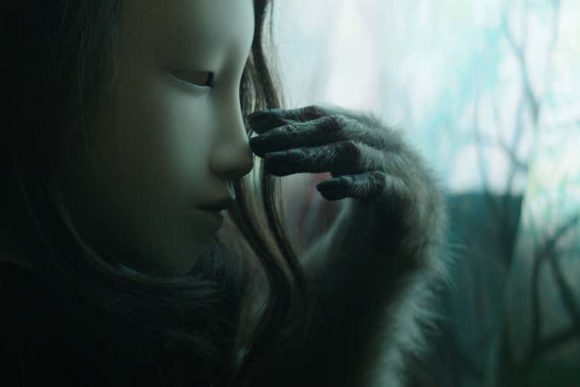EXHIBITIONS about our relationship with the environment tend to be bombastic. Either they preach doom and destruction, or they reckon our children will soon be living lives of plenty on artificial atolls.
Animalesque at the Baltic Centre for Contemporary Art in Gateshead, UK, knows better than this. In an international selection of art, sculpture and film, curator Filipa Ramos points out how little we know about other species, and how much we might still learn. With this humility comes hope that we can reform our relations with Earth.
Research has a major role to play, but it can only go so far. One unassuming TV monitor is screening a video from Tupilakosaurus, a long-running project by Danish-Greenlandic artist Pia Arke. It is a telling but not unsympathetic satirical film, in which examinations of a fossil dinosaur throw up folk tales, mangled histories and surreal mountains of paperwork as researchers try to represent and classify the Arctic’s life and history.
Often, we find out about other species only as we are evicting and replacing them. This happened to the Malayan tiger, which now numbers just some 300 wild cats in the Malay Peninsula. 2 or 3 Tigers (2015) by Singaporean artist Ho Tzu Nyen is a 19-minute, two- screen video, made using CGI and some very dodgy operatic singing, about the were-tigers of Malayan folklore. As ancestors, companions, competitors, protectors, destroyers and gods, tigers were central to the indigenous culture. Western settlers couldn’t find any there, however, until one sprang out of the forest in 1835 and attacked a hapless surveyor’s theodolite.
Our most stable cross-species relationships are with domesticated animals, even if they are sometimes discomforting or guilt-ridden affairs. In French artist Pierre Huyghe’s Untitled (Human Mask) (2014), a macaque explores an abandoned restaurant in Fukushima, Japan, an area gutted by the 2011 tsunami. Identifying the species of our protagonist takes a while. You would be forgiven for thinking you were watching a girl, because the macaque is wearing a wig and an eerily beautiful mask (pictured above).
The uncanny collision of categories (girl and pet, puppet and creature) only becomes more dizzying when you discover that Huyghe recruited his “star” from a Tokyo restaurant where the macaque spent many apparently happy hours working as a waiter.
It is a film of great pathos, more moving and less disturbing than this bald description suggests. It speaks to our difficulty understanding other animals, steeped as we are in human concerns.
The difficulty is real, can research help us? Degreecoordinates, Shared traits of the Hominini (humans, bonobos and chimpanzees) (2015) attempts it. For this, UK artist Marcus Coates worked with primatologist Volker Sommer to list questions relevant to all three: do you resolve conflicts using sex? Can you use a bottle opener? Do you kiss? Are you preoccupied with hierarchy and status?
Human answers vary, but so do those gleaned from studying individual chimps and bonobos. The differences between individuals of each of the three species far exceed those across species. Animalesque celebrates what we share – and what we can learn.

